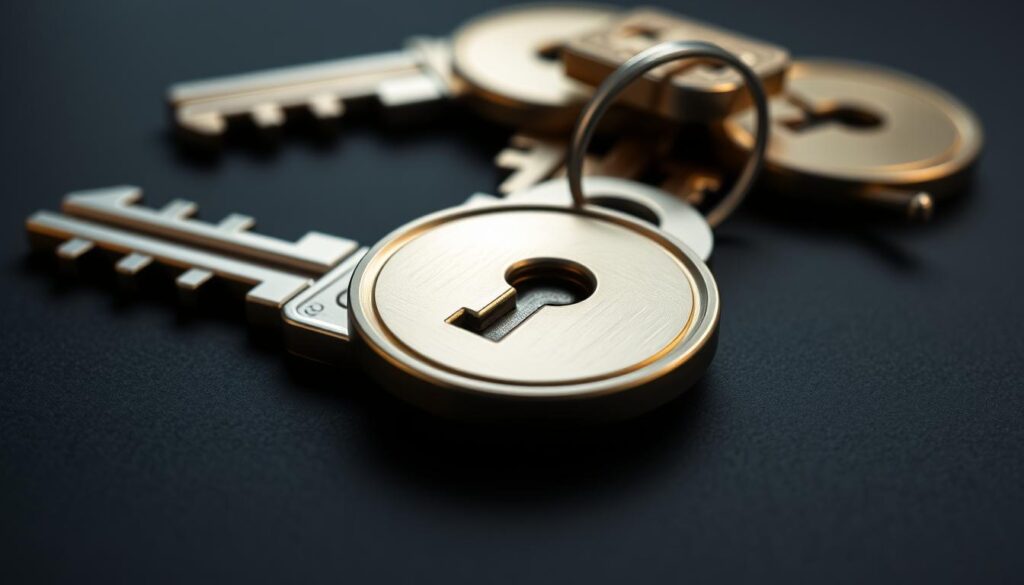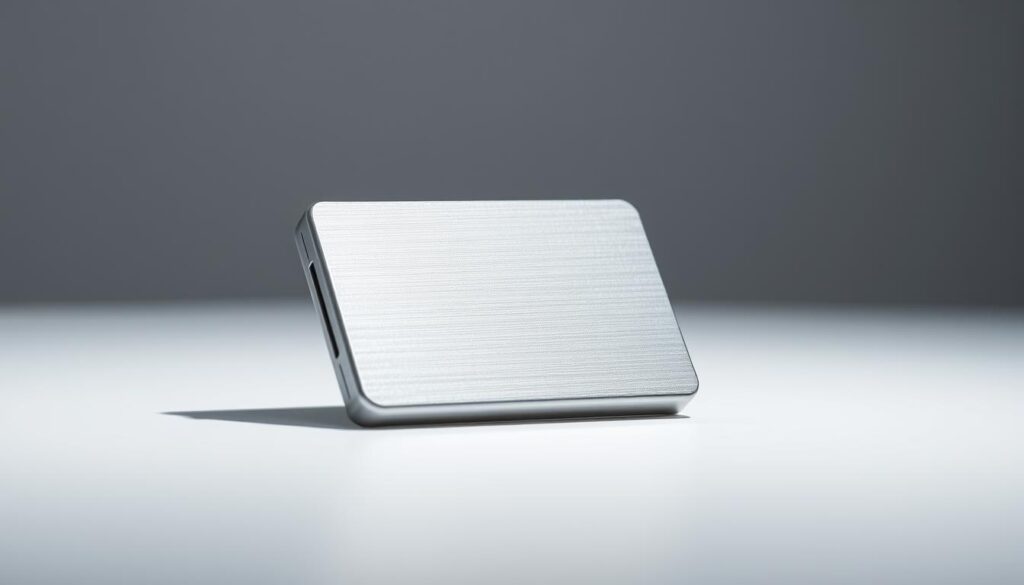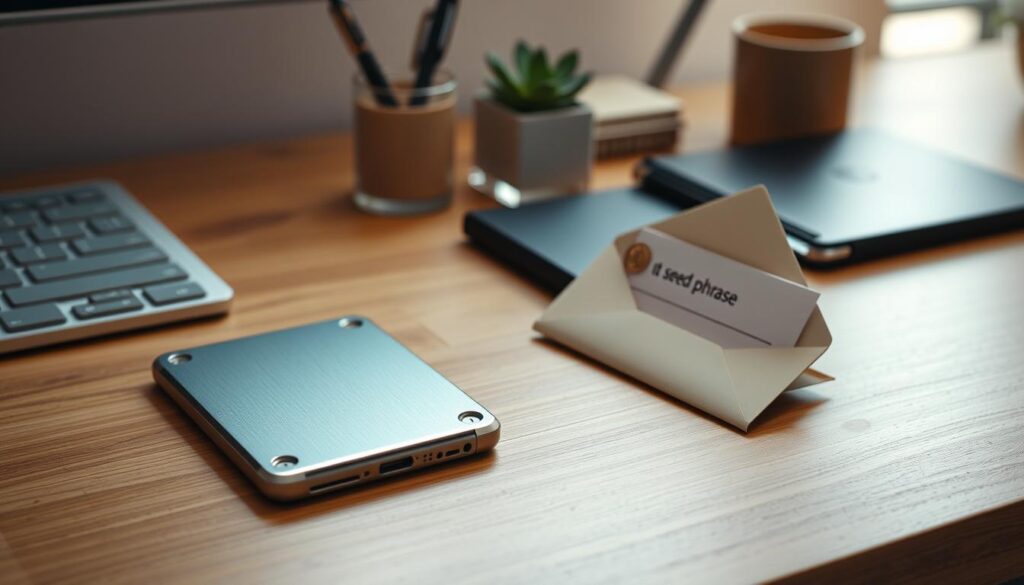Now Reading: How to store cryptocurrency safely in hardware wallets step by step Tutorial
- 01
How to store cryptocurrency safely in hardware wallets step by step Tutorial
How to store cryptocurrency safely in hardware wallets step by step Tutorial

Protecting your digital assets takes clear actions. About 20% of coins have vanished due to theft, bugs, or failed devices. Recent years saw billions lost to attacks, so solid storage matters.
Cold storage keeps private keys offline and away from internet threats. Devices like Ledger Nano S, Trezor, and KeepKey sign transactions on the device itself. This reduces exposure when you use an internet-connected computer.
This short guide explains essential wallet choices: custodial versus self-custody and hot versus cold. You will learn practical steps for picking a reputable hardware wallet, initializing it properly, and backing up the recovery phrase.
We also cover testing with a small transfer, verifying addresses on-device, and a maintenance routine that includes firmware updates and safe software installs. Follow these practices and you’ll greatly improve security for your crypto and long-term storage of keys.
Key Takeaways
- Cold, offline key storage cuts risk compared with internet-connected wallets.
- Choose reputable hardware brands and initialize them securely.
- Always back up and protect your recovery phrase from loss or theft.
- Verify addresses on the device before moving larger funds.
- Keep firmware and wallet software up to date to lower exposure to threats.
Why cold storage matters for securing your digital assets today
Cold storage removes private keys from the connected internet and shrinks the attack surface that targets wallets. As much as 20% of all coins have vanished through theft, software bugs, or malfunctioning devices. In 2021 about $14 billion worth of crypto was stolen, which shows the scale of the problem.
Keeping keys offline makes them largely immune to common online threats like phishing, malware, and remote hacking. Hot wallets and mobile apps are convenient, but they expose keys to internet‑facing risks that cold storage avoids.
Institutional use underscores this point. The largest known Bitcoin cold wallet tied to Binance holds over 250,000 BTC, showing how large holdings rely on offline security. For individual assets, the same principle applies: less exposure equals lower risk of loss or theft.
- Limits exposure by keeping keys off internet‑connected devices.
- Reduces damage if a computer or phone is compromised.
- Balances access: keep small funds online and move major holdings offline.
Wallet fundamentals: custodial vs self-custody and hot vs cold
Deciding who holds your private keys is the single biggest choice for practical security. That decision affects control, recovery options, and the amount of trust you place in third parties.
Custodial and non-custodial wallets explained
Custodial wallets mean a third party stores your private keys and can help recover access if you lose credentials. This convenience introduces counterparty risk, so examine an exchange or provider’s security and solvency.
With self-custody, the keys live with the user. You gain full control and responsibility for backups, recovery, and protecting your wallet from loss or theft.

Hot wallets vs cold wallets: convenience, connectivity, and risk
Hot wallets are online and designed for fast access and frequent transactions. They are ideal for spending or trading small amounts but are more exposed to the internet.
Cold wallets keep keys offline. They trade convenience for stronger long‑term storage and are the preferred choice for core holdings of crypto assets.
When to combine hot and cold storage for balanced security
Many users blend both approaches. Keep a small amount in a hot wallet for quick access to funds. Move the majority into cold storage for protection.
- Match holdings to your transaction frequency and risk tolerance.
- Verify you can restore any self-custody wallet before relying on it.
- As assets grow, shift more value offline and tighten verification and backups.
What hardware wallets do and why they’re the strong security option
Specialized devices handle signing and verification so keys never touch vulnerable software on a computer or phone. This separation is the main reason a hardware wallet offers strong security for long‑term holdings.
Devices like Ledger Nano S, Trezor, and KeepKey keep private keys offline and perform cryptographic signing inside the unit. Regular firmware updates add patched protections and improve core security features.

Offline private keys and on-device transaction signing
A hardware wallet isolates private keys so signing never exposes them to an infected desktop. On‑device signing prevents malware from extracting secrets during transactions.
Threat model reduction: minimizing exposure to online threats
Verifying addresses and amounts on a device screen blocks clipboard hijacks and tampered software. Usability features — KeepKey’s large display and Trezor Model T’s touchscreen — make verification easier and reduce user error.
- The critical cryptography runs inside the hardware, not the computer.
- Connect only when needed, sign transactions, then disconnect to limit internet exposure.
- Firmware updates strengthen protections and fix vulnerabilities over time.
How to store cryptocurrency safely in hardware wallets step by step
Begin by selecting a trusted manufacturer and then move through verified setup steps for strong protection.
Buy direct from makers. Choose a reputable device such as Ledger, Trezor, or KeepKey and order from the official store to avoid tampered units.
When you unbox, initialize with a strong PIN and generate the recovery phrase on‑device. Never photograph or upload the phrase; write it on durable material and store duplicates in separate secure locations.

On a clean computer, install authentic wallet software from the vendor and verify checksums or signatures. Limit that computer’s use and avoid third‑party download links.
- Receive a small test deposit and confirm it on‑chain.
- Always verify the full recipient address and amount on the device screen before approving any transactions.
- Keep the unit disconnected from the connected internet except while signing, then disconnect immediately.
Maintain and rehearse: update firmware regularly for new security features and set quarterly reviews. Finally, run a recovery drill with a spare device or test wallet to confirm you can regain access using the recorded phrase.
For recommended models and more guidance, see the best wallet choices.
Best practices to store private keys and reduce theft or loss
Good physical and operational habits keep risk low and preserve access to your assets. Start with a durable backup of the recovery phrase and plan how many copies you need and where they will live.

Practical steps:
- Protect the phrase first: transcribe legibly, use a metal backup for durability, and place copies in separate secure location(s).
- Keep devices and backups offline. Never photograph or upload the phrase; avoid cloud or email storage.
- Limit who knows about your wallet setup. Physical security and privacy reduce theft and social engineering risk.
- Stay current with firmware updates and only download authentic wallet software from vendor sites.
- Adopt verification habits: confirm addresses on the device screen, double-check URLs, and ignore unsolicited recovery requests.
Advanced options: consider a 2-of-3 multisignature arrangement to split keys across trusted locations. Avoid paper solutions unless you fully understand generation and sweeping, and audit your process periodically for loss prevention.
Comparing storage options: risks, usability, and when to use each
Different wallets suit different goals: quick trades, daily spending, or long-term safekeeping. Pick an option that matches how often you need access and how much protection your assets require.
Exchange wallets: convenience vs third‑party key custody
Exchange wallets are custodial hot accounts that make onboarding and trading simple. They let users trade niche cryptocurrencies and move funds fast.
But the platform holds the keys. That adds counterparty and platform risk, so avoid keeping core holdings on exchanges.
Mobile hot wallets: fast access for transactions, not large balances
Mobile hot wallets give users quick access funds for daily use. They are self‑custody and handy for spending and small transfers.
Keep only modest balances there; constant connectivity raises the chance of compromise for larger holdings.
Paper wallets: offline but high user‑error risk in practice
Paper wallets were an early cold storage option and keep keys offline on printed paper.
They are fragile operationally. Generating, storing, and sweeping a paper wallet correctly requires care most users find difficult.
Hardware wallets: cold storage for long‑term holdings
Hardware wallets provide robust cold storage by keeping private keys offline and signing on‑device. They are ideal for long‑term core assets.
Combine approaches: keep a small hot balance for spending, use an exchange for active trading, and hold major funds on a hardware device.
- Match each option to purpose: trading, spending, or long‑term holding.
- Evaluate usability and recovery procedures before committing funds.
- Check that chosen wallets support the cryptocurrencies you hold.
Top hardware wallet choices and their security features
Top choices for personal cold storage balance proven security and everyday usability. Pick a model that matches the way you manage funds and the level of protection you need.
Ledger Nano S
Secure element protection: the Ledger Nano S stores private keys inside a hardened secure element. It supports many cryptocurrencies and receives regular firmware updates that add security features and fixes.
Trezor (Model T)
Open-source transparency: Trezor’s firmware and companion software invite community review. The Model T adds a touchscreen that improves usability while keeping on-device verification clear and direct.
KeepKey
Large display for verification: KeepKey emphasizes clarity with a bigger screen. That makes it easier to confirm addresses and amounts during transactions before you approve on the device.
- All three sign transactions on-device, so critical keys never touch an internet-connected computer.
- Look for robust firmware updates, authenticated software downloads, and clear prompts that cut operational errors.
- Check support for your cryptocurrencies and confirm recovery testing is straightforward.
Choose the wallet model that matches your budget, desired security features, and how you plan to manage digital assets over time.
Secure your crypto for the long haul: blend methods, follow the steps, and act now
A resilient plan pairs cold control for core funds with a small spending wallet for everyday use. Keep most value offline on a hardware wallet and limit online balances. Always keep an air‑gapped option in mind if you need extra hardening, knowing it adds cost and complexity.
Back up your recovery phrase on durable media and test restoration before moving large funds. Use authentic wallet software and keep firmware current to reduce exposure to online threats like phishing and hacking.
Act now: document access procedures, verify recovery drills, and shift growing digital assets toward offline storage. These simple habits cut theft, loss, and user error while preserving access to your funds and transactions.
FAQ
What is the main advantage of using a hardware device for digital asset protection?
A hardware device keeps private keys offline and signs transactions on the device itself, drastically reducing exposure to malware and online attackers compared with wallets on internet‑connected devices.
Which brands are widely recommended for secure cold storage?
Popular options include Ledger (Nano S / Nano S Plus), Trezor (Model One and Model T), and KeepKey. Each uses strong security features like secure elements or open‑source firmware and supports a wide range of tokens.
How should I record and protect my recovery seed phrase?
Write the recovery phrase on physical media during initialization, then create at least two offline backups. Use metal plates for fire and water resistance, store copies in geographically separated secure locations, and never photograph or store the phrase on a connected device.
Can I buy a hardware device from a reseller or should I buy direct from the manufacturer?
Buy direct from the manufacturer or an authorized reseller to reduce risk of tampering. Devices purchased from unknown marketplaces may arrive compromised. Verify packaging, device fingerprints, and perform factory checks during setup.
What steps should I take when initializing a new device?
Initialize the device away from untrusted networks, set a strong PIN, generate a fresh recovery phrase on the device (never import a phrase), and confirm the device displays the same addresses that wallet software shows before receiving funds.
Is firmware updating safe and necessary?
Yes. Authentic firmware patches fix vulnerabilities and add features. Only update firmware via the manufacturer’s official app or instructions, verify signatures when possible, and avoid updates during active large transfers.
How can I test a device before transferring large amounts?
Send a small test transaction first and confirm the receiving address on the device display. Validate the transaction on the blockchain before moving larger balances.
What are best practices for combining hot and cold solutions?
Use cold devices for long‑term holdings and large balances. Keep a separate hot wallet (mobile or desktop) for daily spending and trading. Limit hot wallet funds and use the hardware device for high‑value approvals.
What protection stops social engineering and phishing attacks?
Never reveal your recovery phrase or private keys, verify URLs and software downloads, confirm addresses on the hardware display before approving, and treat unsolicited support requests as suspicious. Use two‑factor authentication on associated accounts.
How do I recover funds if a device is lost, stolen, or damaged?
Restore the wallet on a new compatible device using your recovery seed phrase. Practice a recovery drill with a test phrase to ensure you can restore access. Keep backups secure and accessible only to trusted parties.
Are paper wallets a valid alternative to metal backups?
Paper wallets are offline but vulnerable to water, fire, fading, and handling errors. Metal backups are recommended for durability; use paper only with added protections and duplicate storage methods.
What risks remain even with a hardware device?
Risks include physical theft, loss of the recovery phrase, counterfeit devices, compromised computer endpoints, and social engineering. Mitigate risk with secure backups, verified purchases, clean computers for setup, and ongoing vigilance.
Should I store multiple devices for redundancy?
Consider redundant devices if you need high availability or geographic separation. Ensure each device is initialized with the same seed or use multi‑sig setups for shared control and improved resilience against single points of failure.
How often should I review my security setup?
Review security at least quarterly, check for firmware updates, verify backup integrity, and rehearse recovery procedures. More frequent checks are wise after large transactions or when security advisories appear.












